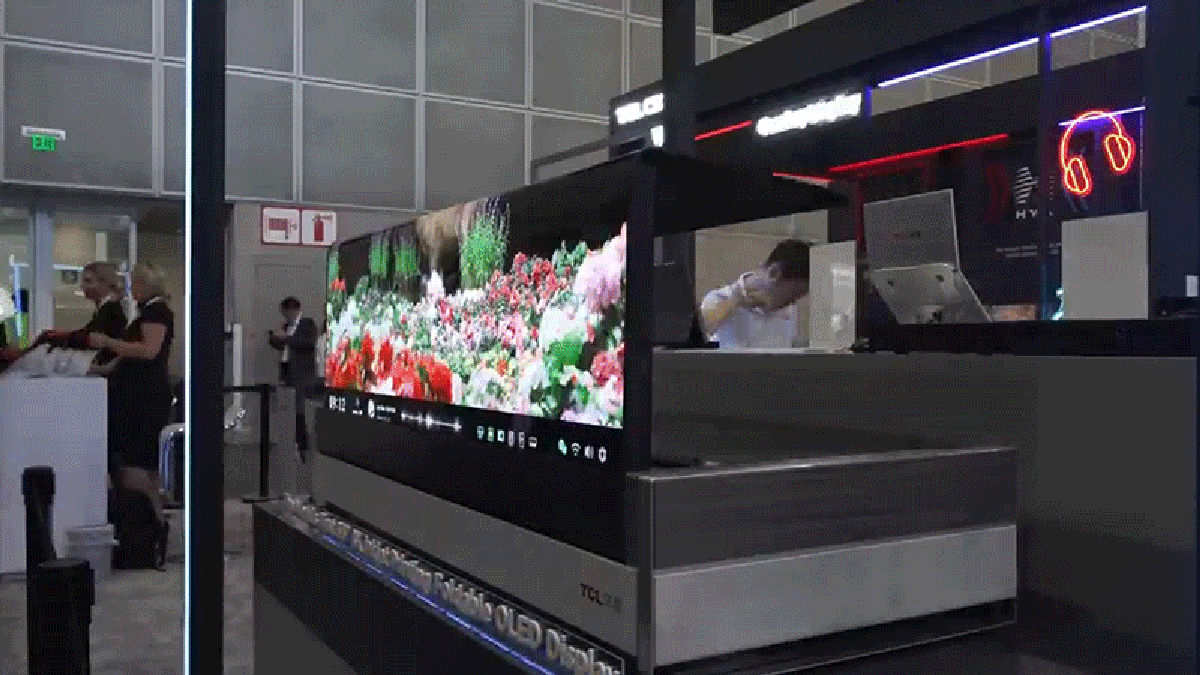
At the push of a button, it folds in half backwards, before being lowered into a small table where it’s protected by a layer of glass that closes on top of it. Half of the panel is still visible after this, but we can’t think of too many good uses for a coffee table with an OLED screen beneath its surface. Viewing angles are far from ideal, and we don’t know anyone who keeps a coffee table pushed up against a wall, which is probably where you’d want the TV positioned once it raises into position. What this prototype does well, however, is draw people to TCL’s booth, and bring attention to what really makes this TV an impressive piece of engineering.
Advertisement
Advertisement
Manufacturing OLEDs has typically relied on a process where organic materials are applied to glass panels using metal stencils called shadow masks that limit the material’s application to specific areas. In a way, it’s similar to how the artist Banksy creates their graffiti pieces by spray-painting walls using paper stencils. A lot of the spray paint ends up on the stencil itself, but while spray paint is cheap, the organic materials used to make OLED panels is not.
A few years ago, TCL announced it would begin making OLED screens in 2023 using a process where inkjet printing technology would be leveraged to precisely apply the organic materials onto glass panels without shadow masks, without waste, and with fewer stray particles (which often lead to panels being defective before they even leave the factory floor). It’s a more precise and cost-effective way of manufacturing OLED panels with a greater success rate, and it promises to eventually bring down the price of OLED TVs.
Advertisement
TCL isn’t the first company to make OLED TVs this way. Japan’s JOLED has been churning out inkjet-printed OLEDs since 2021. So far, inkjet-printed OLEDs have been relatively small, close to 32-inches in size and with resolutions maxing out at 4K, but consumers now want to go big. That’s what makes this prototype from TCL actually exciting. It demonstrates the company can print OLED TVs up to 65-inches in size and at 8K resolutions.
The biggest question from this reveal, which TCL has yet to answer, is what this OLED TV (minus the folding party trick) will cost. Will it be cheaper than other 65-inch OLED screens already on the market, justifying the new manufacturing process, or will it arrive with similar pricing until TCL can effectively ramp up production of inket-printed OLEDs this size?
Services Marketplace – Listings, Bookings & Reviews